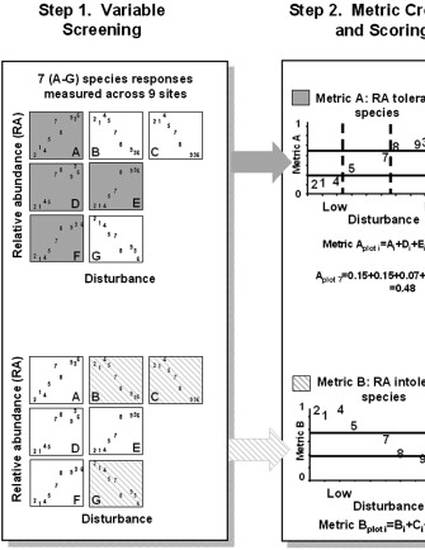
Article
Developing terrestrial, multi-taxon indices of biological integrity: An example from coastal sage scrub
Biological Conservation
(2007)
Abstract
We screened 351 species or genera for their response to disturbance in coastal sage scrub (CSS) to develop a 15-metric, 5-taxon Index of Biological Integrity (IBI). We collected data on ants, birds, herpetofauna, small mammals, and plants for two years on 46 sites established across a gradient of disturbance in three reserves. The gradient spanned relatively intact CSS with thick stands of shrubs, to former CSS stands type-converted to exotic grasses. ANOVAs and clustering analyses indicated the IBI could distinguish four levels of disturbance in CSS. General measures of community structure, such as richness, did not show changes across the gradient for most taxa, and responses of taxa across the gradient were varied and rarely correlated. However, turnover in species or genera across the gradient was common across all taxa as shrub-obligate life forms were replaced by those favoring grassy or disturbed habitats. Our data indicate index-based approaches based on data collected across disturbance gradients may outperform more traditional community level metrics when responses to anthropogenic influences are complex and vary across species.
Keywords
- community,
- disturbance,
- exotic species,
- invasion,
- index,
- monitoring,
- IBI
Disciplines
Publication Date
November, 2007
DOI
https://doi.org/10.1016/j.biocon.2007.08.005
Citation Information
James E. Diffendorfer, G. M. Fleming, Jennifer Duggan, R. E. Chapman, et al.. "Developing terrestrial, multi-taxon indices of biological integrity: An example from coastal sage scrub" Biological Conservation Vol. 140 (2007) p. 130 - 141 Available at: http://works.bepress.com/jennifer-duggan/17/
